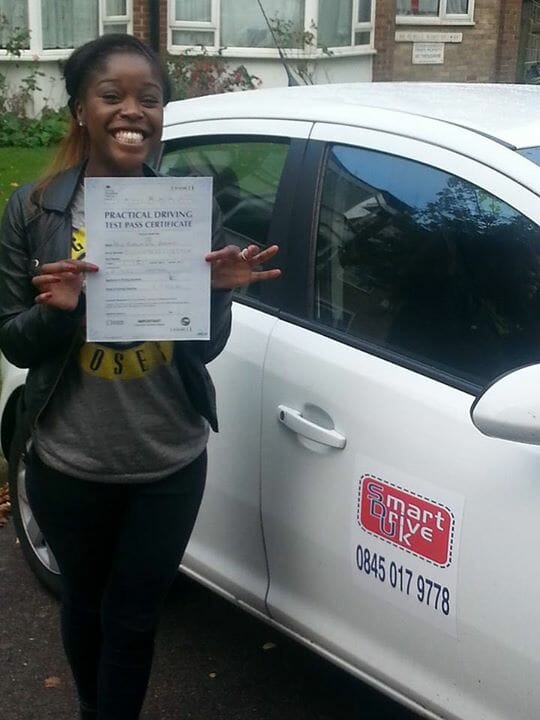
Introduction to Learning to Drive in the UK
The process of learning to drive in the UK involves several steps. Firstly, an individual must be at least 17 years old and have a valid provisional driving licence. This can be obtained by applying online or by post. Once the provisional licence is obtained, the learner driver can start taking driving lessons with a qualified driving instructor. It is recommended to have at least 45 hours of professional driving lessons, along with a minimum of 12 hours of private practice.
After gaining the necessary knowledge and experience, the learner driver can book and take the theory test. This is a multiple-choice test that assesses the learner’s understanding of the Highway Code and the rules of the road. It covers topics such as road signs, traffic laws, and vehicle safety. Passing the theory test is a requirement before taking the practical driving test.
The practical driving test is the final step in the process of learning to drive in the UK. It is an on-road assessment of the learner’s ability to drive safely and competently. The test includes various driving manoeuvres, such as parallel parking, emergency stops, and navigating roundabouts. The examiner will also assess the learner’s ability to follow road signs, use mirrors effectively, and make appropriate decisions while driving.
Once the learner driver successfully passes the practical driving test, they will be issued with a full driving licence. This licence allows them to legally operate a motor vehicle on public roads in the UK.
Learning to drive in the UK is important for several reasons. Firstly, it is a legal requirement to have a valid driving licence in order to drive a vehicle on public roads. Without a driving licence, it is illegal to operate a motor vehicle and can result in penalties and fines. Secondly, learning to drive provides individuals with increased independence and freedom. It allows them to travel wherever they want, whenever they want, without relying on public transportation or others for transportation. This can greatly enhance their quality of life and open up opportunities for exploration and adventure.
Furthermore, having a driving licence can improve job prospects. Many employers require their employees to have a valid driving licence, especially for roles that involve driving or require travel. Having a driving licence can make individuals more marketable and increase their chances of securing employment.
Learning to drive also improves safety on the roads. By understanding and following the rules of the road, individuals can contribute to safer driving practices and reduce the risk of accidents. Additionally, having the ability to drive can provide individuals with the opportunity to help others in need, such as providing transportation for family members or friends who may not have access to a vehicle.
Obtaining a Provisional Driving Licence
A provisional driving licence is a document issued by the Driver and Vehicle licencing Agency (DVLA) in the UK that allows individuals to legally drive a motor vehicle on public roads. It is a temporary licence that is obtained by learner drivers as the first step towards obtaining a full driving licence.
To apply for a provisional driving licence in the UK, you must meet certain requirements. Firstly, you must be at least 15 years and 9 months old. Additionally, you must be a resident of Great Britain and have a valid UK passport or other form of identity.
There are two methods to apply for a provisional driving licence: online or by post.
Applying Online
To apply online, you need to visit the DVLA website and complete the online application form. You will be required to provide your personal details, including your name, address, date of birth, and National Insurance number. You will also need to provide a valid UK address and a valid debit or credit card to pay the fee.
Applying by Post
To apply by post, you need to obtain a D1 application form. This form can be obtained from the Post Office or downloaded from the DVLA website. You will need to fill out the form with your personal details, including your name, address, date of birth, and National Insurance number. You will also need to provide a valid UK passport or other form of identity. The completed form, along with the necessary documents, should be sent to the address provided on the form.
When applying for a provisional driving licence, you will need to provide certain documents. These documents include:
- A valid UK passport or other form of identity
- Proof of address, such as a utility bill or bank statement
- A passport-sized photograph
- A completed application form (either online or by post)
- The appropriate fee, which is currently £34 for a car or motorcycle licence
It is important to ensure that all the required documents are provided accurately and that the application fee is paid in order to successfully obtain a provisional driving licence.
Finding a Driving Instructor
How do I find a qualified driving instructor in the UK?
To find a qualified driving instructor in the UK, there are several methods you can use:
- Online search: The Driver and Vehicle Standards Agency (DVSA) website provides a list of approved driving instructors (ADIs) who are qualified to teach driving in the UK. You can search for an ADI by postcode, name, or registration number.
- Recommendations: You can ask friends, family, or colleagues for recommendations on qualified driving instructors they have used in the past. Personal recommendations can be a valuable source of information.
- Driving schools: Many driving schools have websites or online directories where you can search for qualified driving instructors in your local area. These driving schools often have a team of instructors who are registered and approved by the DVSA.
What qualifications should I look for in a driving instructor?
When looking for a driving instructor, there are several qualifications you should consider:
- Approved Driving Instructor (ADI) qualification: Make sure the driving instructor is a qualified ADI. ADIs must pass a series of tests and assessments to demonstrate their knowledge and skills in teaching driving.
- Registration with the DVSA: The driving instructor should be registered with the DVSA. This registration ensures that they meet the necessary standards and requirements set by the DVSA.
- Membership in professional bodies: It is also beneficial if the driving instructor is a member of a professional body such as the Driving Instructors Association (DIA) or the Institute of Advanced Motorists (IAM). These organisations provide additional training and support for driving instructors.
What questions should I ask a potential driving instructor before starting lessons?
Before starting lessons with a driving instructor, it is important to ask them relevant questions to ensure they are the right fit for you. Some questions you may want to ask include:
- Experience: How long have you been teaching as a driving instructor? It is important to know their level of experience in teaching driving.
- Qualifications: What qualifications do you have as a driving instructor? This will give you an idea of their level of expertise and training.
- Teaching style: What is your teaching style? Different instructors may have different teaching methods, so it is important to find an instructor whose teaching style aligns with your learning preferences.
- Availability: What is your availability for lessons? It is important to know if their schedule aligns with your availability.
- Cost and payment: What is the cost of lessons? Do you offer any discounts or packages for block bookings? It is important to understand the cost structure and payment options.
By asking these questions, you can gather the necessary information to make an informed decision about which driving instructor to choose.
Taking Driving Lessons
The number of driving lessons you need to take in the UK will depend on your individual learning needs and experience. Generally, it is recommended that you take at least 45 hours of professional driving lessons, plus 12 hours of private practice with a qualified driver. This will give you the best chance of passing your driving test.
The average cost of driving lessons in the UK is around £30-£45 per hour. Prices can vary depending on the instructor and the area you live in. It is also worth noting that some driving schools offer discounts for block bookings.
During a driving lesson, you can expect your instructor to provide you with guidance and advice on how to drive safely and confidently. They will also assess your driving skills and provide feedback on areas that need improvement. Your instructor will also help you to become familiar with the rules of the road and the Highway Code.
Your instructor will also help you to become familiar with the manoeuvres you will need to complete during your driving test. This includes the emergency stop, forward and reverse by parking, parallel parking, and pulling up on the right hand side of the road and reversing two car lengths.
Finally, your instructor will help you to become familiar with the roads in your area and the different types of road signs. They will also help you to develop your skills in areas such as junctions, roundabouts, and dual carriageway driving.
Theory Test Preparation
The theory test in the UK is a mandatory computer-based test that learner drivers must pass in order to obtain a full driving licence. It is designed to assess a driver’s knowledge of the Highway Code and the rules of the road. The test consists of two parts: a multiple-choice section and a hazard perception section.
Topics Covered in the Theory Test
The multiple-choice section of the theory test covers a wide range of topics related to driving. Some of the main topics include:
- Road signs and markings: This includes knowledge of different road signs, their meanings, and how to respond to them.
- Vehicle safety and maintenance: This covers topics such as vehicle cheques, basic maintenance, and understanding vehicle safety features.
- Driving laws and regulations: This includes knowledge of the legal requirements for driving, such as speed limits, traffic laws, and penalties for driving offences.
- Driving techniques: This covers topics such as defensive driving, hazard awareness, and safe driving practices.
- Road and traffic conditions: This includes knowledge of how to drive in different weather conditions, on different types of roads, and in various traffic situations.
- Motorway driving: This covers specific rules and regulations for driving on motorways, including lane discipline, overtaking, and emergency procedures.
- Vulnerable road users: This includes knowledge of how to share the road safely with pedestrians, cyclists, and other vulnerable road users.
Preparing for the Theory Test
To prepare for the theory test, it is important to study the official Highway Code, which is the official guide to the rules of the road in the UK. The Highway Code is available as a book or as an app. It is also recommended to use official practice materials provided by the Driver and Vehicle Standards Agency (DVSA). These resources include books, DVDs, and online practice tests.
In addition to studying the Highway Code and using official practice materials, it is also helpful to take practice tests. There are a number of websites and apps that offer practice tests for the theory test. These tests are designed to help learners familiarise themselves with the format of the test and the types of questions they may be asked.
It is important to allocate enough time for preparation and to study regularly. It is also recommended to review any areas of weakness and seek clarification on any topics that are not fully understood. Finally, it is important to get a good night’s sleep before the test and to arrive at the test centre well-rested and prepared.
Practical Driving Test Preparation
The practical driving test in the UK is a test of a driver’s ability to drive safely and competently on public roads. It is administered by the Driver and Vehicle licencing Agency (DVLA) in England, Scotland, and Wales, and by the Driver & Vehicle Agency (DVA) in Northern Ireland. The test consists of three sections: theory, hazard perception, and a driving examination.
During the practical driving test, a range of skills will be assessed to determine the driver’s ability to drive safely and competently. These skills include:
- Following the Highway Code and obeying the rules of the road: The examiner will assess the driver’s knowledge and understanding of the Highway Code, including road signs, speed limits, and other rules of the road.
- Demonstrating good observation and anticipation: The driver will be assessed on their ability to observe the road ahead and anticipate potential hazards, such as pedestrians, cyclists, and other vehicles.
- Using the controls of the vehicle safely and effectively: The driver will be assessed on their ability to use the vehicle’s controls, including steering, accelerating, braking, and changing gears, in a safe and controlled manner.
- Manoeuvring the vehicle safely and accurately: The driver will be assessed on their ability to perform a range of manoeuvres, such as parallel parking, bay parking, and pulling up on the right hand side of the road and reversing, with accuracy and control.
- Demonstrating good judgement and decision-making: The driver will be assessed on their ability to make appropriate decisions in a variety of driving situations, such as when to give way, when to overtake, and when to use the correct lane.
- Showing consideration for other road users: The driver will be assessed on their ability to demonstrate courtesy and consideration to other road users, including pedestrians, cyclists, and other drivers.
To prepare for the practical driving test, it is important to practice driving regularly and become familiar with the Highway Code. It is also recommended to take driving lessons with an Approved Driving Instructor (ADI) who can provide guidance and advice on driving skills and techniques.
Additionally, practising the manoeuvres that will be assessed during the test, such as parallel parking and reversing, is crucial. It is also beneficial to practice driving in a variety of different conditions, such as different weather conditions and at different times of the day, to gain experience and confidence.
Studying and revising the Highway Code is essential to ensure a good understanding of the rules of the road. There are also online resources available, such as practice tests and hazard perception videos, that can help familiarise yourself with the format and requirements of the test.
Finally, it is important to get plenty of rest before the test and to arrive at the test centre well-prepared and on time. Being calm and focused during the test will help you perform at your best.
Hazard Perception Test
The Hazard Perception Test (HPT) is a computer-based test that is part of the UK driving theory test. It is designed to assess a learner driver’s ability to identify and respond to potential hazards on the road. The test consists of a series of video clips featuring everyday road scenes.
How does the Hazard Perception Test work?
The HPT consists of 14 video clips, each lasting around one minute. The clips feature everyday road scenes and the learner driver must identify the developing hazards in each clip. The learner driver must click the mouse button to indicate their response. The earlier the learner driver identifies the hazard, the higher the score they will receive. The maximum score for each clip is five points. The total score for the test is 75 points.
How can I practice for the Hazard Perception Test?
The best way to practice for the HPT is to use an online practice test. There are a number of websites that offer practice tests for the HPT. These tests are designed to help the learner driver become familiar with the format of the test and to improve their hazard perception skills. It is important to practice regularly and to review the feedback provided after each practice test to identify areas for improvement. Additionally, it is recommended to watch real-life driving scenarios and to discuss potential hazards with experienced drivers to further enhance hazard perception skills.
Pass Plus Scheme
The Pass Plus scheme is a UK government-backed training programme designed to help new drivers gain more experience and confidence on the roads. It is a practical training course that takes at least 6 hours and is aimed at drivers who have recently passed their driving test. The course covers a range of driving topics, including motorway driving, night driving, and driving in all weather conditions.
The Pass Plus scheme can benefit new drivers in several ways. Firstly, it helps to build their confidence and experience on the roads, which can reduce the risk of accidents. By gaining more experience in different driving conditions, such as motorway driving and night driving, new drivers can become more competent and confident behind the wheel.
Secondly, completing the Pass Plus scheme can help new drivers save money on their car insurance. Many insurance companies offer discounts to drivers who have completed the scheme, as they are considered to be safer and more responsible drivers. This can result in significant savings on insurance premiums.
Lastly, the Pass Plus scheme helps to improve driving skills by covering topics that are not typically covered in the standard driving test. The course provides additional training in areas such as driving in adverse weather conditions and on motorways, which can enhance a driver’s ability to handle different situations on the road.
To enrol in the Pass Plus scheme, new drivers must first find an approved Pass Plus instructor. This can be done by searching online or contacting a local driving school. Once an approved instructor is found, a course can be booked. The course consists of six modules, each focusing on a different aspect of driving. These modules include motorway driving, night driving, and driving in all weather conditions. After completing the course, drivers will receive a certificate that can be used to obtain insurance discounts.
Insurance for Learner Drivers
Learner drivers in the UK are required to have a valid insurance policy in order to legally drive a car. The type of insurance they need is learner driver insurance. This type of insurance is specifically designed for learner drivers and provides cover for the learner driver while they are learning to drive and practising in a car that is not owned by them.
The cost of learner driver insurance can vary depending on several factors. These factors include the age of the learner driver, the type of vehicle they are driving, and the length of the policy. Generally, learner driver insurance policies are more expensive than standard car insurance policies, as they are designed to cover the additional risks associated with inexperienced drivers.
When choosing learner driver insurance, there are several factors that should be considered. These factors include the age and experience of the learner driver, the type of car they are driving, and the length of the policy. Younger and less experienced drivers are generally considered to be higher risk and may be charged higher premiums. Some cars are also considered to be higher risk than others, which may affect the cost of the insurance. Additionally, the length of the policy should be considered, as shorter policies may be cheaper but may not provide the same level of coverage as longer policies.
Take Your Time and Don’t Rush
Learning to drive is a process that takes time and patience. It is important to take your time and not rush into driving in complex or challenging situations until you feel ready. Start with short drives in familiar areas to get used to the car and the controls. Gradually increase the difficulty of your drives as you become more comfortable and confident.
Stay Focused and Avoid Distractions
When you are behind the wheel, it is important to stay focused and avoid distractions. Keep your attention on the road and the task at hand. Avoid using your phone, eating, or engaging in any other activities that may distract you from driving safely.
What to Do if You Make a Mistake
Making mistakes is a normal part of the learning process. If you make a mistake during a driving lesson, it is important to stay calm and composed. Take a deep breath and focus on the task at hand. If you are unsure about something, don’t hesitate to ask your instructor for help or clarification. They are there to guide you and provide you with the necessary support.
Remember, learning to drive is a gradual process, and it is important to be patient with yourself. With practice, guidance, and a positive attitude, you can become a confident and safe driver.
Contact Smart Drive UK for Driving Lessons
To book driving lessons with Smart Drive UK, you can contact them by phone, email, or through their website. Their friendly customer service team is available to answer any questions you may have and help you book your driving lessons. You can reach them by phone at 01903 691002 or by email at admin@smartdriveuk.co.uk. Alternatively, you can visit their website at www.smartdriveuk.co.uk and fill out the contact form.
Smart Drive UK covers a wide range of areas across the UK. They have instructors in England, Scotland, Wales, and Northern Ireland. So no matter where you are located, you can find a Smart Drive UK instructor near you.



